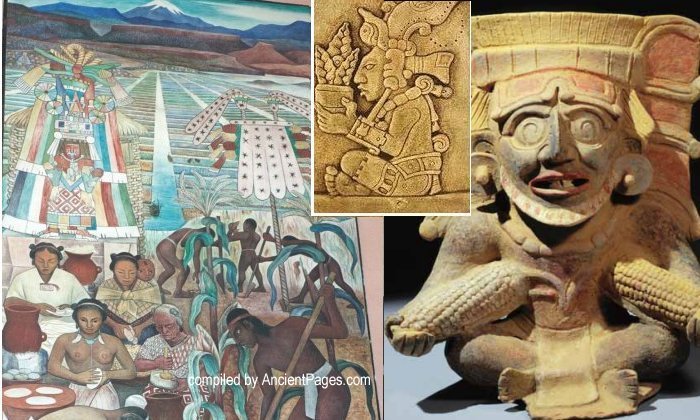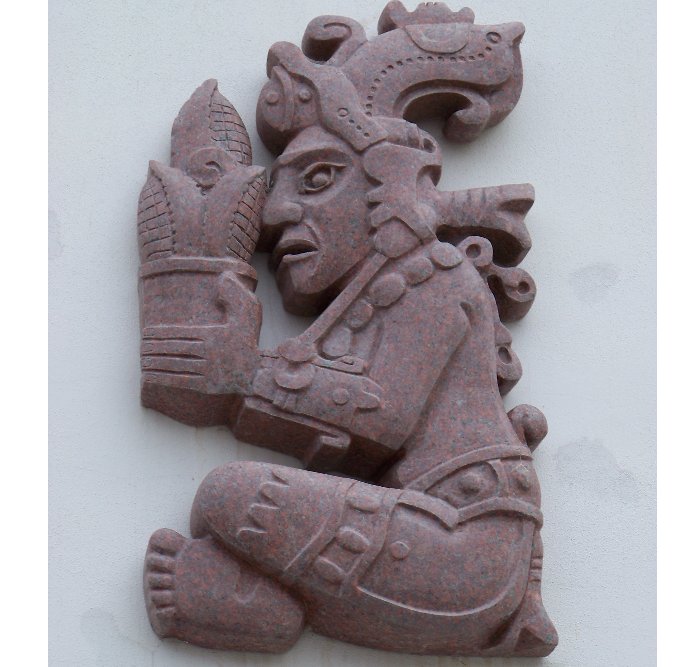Yum Kaax, Mayan God Of Agriculture, Lord Of Woods And Caretaker Of Animals
A. Sutherland - AncientPages.com - The pantheon of early South and Mesoamerican gods included many deities to whom people regularly made offerings.
One of them was Yum Kaax (also known as Ah Mun, Yum K'aax, or Yum Uil), often portrayed with the most sacred food of the Maya people - corn. His name originates from the Maya words 'Yum' ("lord") and 'Kaax' ("forest") or "the wild."
Therefore, this great deity is, first of all, Lord of the Forest and guardian of all wildlife.
The ancient Maya regarded Yum Kaax as a benevolent agricultural god symbolizing abundant life and prosperity. During the Classical period, he was identified as a priest watering corn grains over Mother Earth's head.
Among his most respected titles were "lord of the forest land" (or "lord of the forest") and "Lord of the harvest." In many Mayan beliefs, he was the god of corn and agriculture, the ruler of the jungle and nature.
Yum Kaax whose counterpart in the Totonac culture was Centeotl, was known to have a passive nature, making him helpless and frequently attacked by birds, insects, and troublesome rodents. He depended on Chac, the god of life-giving rain, and on humans, who represented Yum Kaax's greatest and most trusted ally.
The Maya people in ancient times believed that by their rituals, they could attract the rain needed for grains and leaves, free them of weeds, and drive away or at least discourage pests that harmed them.
Relief image of Yum Kaax in front of the entrance to the Botanical Garden of Teplice, Czech Republic. Source
Yum Kaax was a grateful deity showing his gratitude for good people by providing life for them through his food. It was his way of showing that he could give much in return for all this care.
The One Who Punished Bad Hunters
As the patron of the cultivation, Yum Kaax was involved in a variety of agricultural works. He protected animals and plants for human use and nourishment and helped those who hunted for their food.
Yum-Kaash was honored and loved, and the hunters respected this young god. He could either lead them to good hunting or punish them by turning the arrow back if proper respect was not given to an animal. Therefore, they had to direct special prayers and perform certain rituals, asking for Yum Kaax's permission and guidance, particularly during the hunting of deer.
An old legend says that if a hunter gets deep into the forest without asking the deity for permission, he may be in danger of being harmed or lost. Sometimes, he can return home safely but may experience particular food, water, or possessions losses. The hunters in old times believed that Yum Kaax protected the forests, cared for wild animals, and punished evildoers who harmed them.
Also, farmers invoked him before clearing the land for cultivation and wanted to receive his benefits and indispensable help in case of need.
In ancient Mayan society, keeping a good relationship with their gods was vital, so it was not strange that sometimes human sacrifices were made to please the deities.
In the pantheon, Yum Kaax—a symbol of youth and strength—was among the youngest Mayan gods. Among the Mayans of Yucatan, he was often considered the son of Itzamna and Ixchel, the rainbow goddess.
One of Yum Kaax's physical representations was a young man wearing a headdress in the form of corn and holding a corn cob with both hands. Another time, as the Lord of Woods, he has a vase with three ears of corn. Therefore, he was often mistaken for a god of corn.
The Mayans kept their belief that this young god kept their crops healthy, preventing them from starving to death. When the field withered up, Yum-Kaax perished, and when it turned green again, the deity resurrected. It frequently happened that the deceased Maya ruler in the afterlife was depicted as the young god of maize. The Mayans believed that the gods from cornmeal created them.
As the Lord of the Harvest, Yum Kaax symbolized the resurrection and rebirth of life. He represented the cyclical nature of all life on our planet.
Written by – A. Sutherland - AncientPages.com Senior Staff Writer
Updated on March 30, 2024
Copyright © AncientPages.com All rights reserved. This material may not be published, broadcast, rewritten or redistributed in whole or part without the express written permission of AncientPages.com
More From Ancient Pages
-
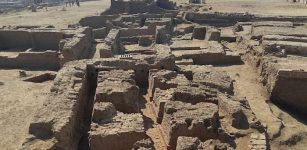 Major Discovery Of A Complete Ancient Roman City In Luxor, Egypt
Archaeology | Jan 24, 2023
Major Discovery Of A Complete Ancient Roman City In Luxor, Egypt
Archaeology | Jan 24, 2023 -
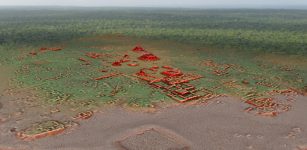 LIDAR Reveals Secrets Of The Enormous Ancient Maya City Of Calakmul
Archaeology | Oct 31, 2022
LIDAR Reveals Secrets Of The Enormous Ancient Maya City Of Calakmul
Archaeology | Oct 31, 2022 -
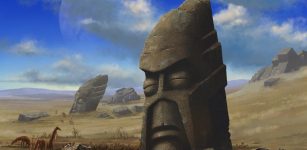 Easter Island May Offer Proof Of An Alien Apocalypse
Archaeology | Jun 7, 2018
Easter Island May Offer Proof Of An Alien Apocalypse
Archaeology | Jun 7, 2018 -
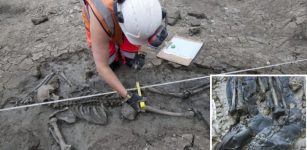 Medieval Mystery Of The Booted Man Found In The Thames Mud
Archaeology | Dec 10, 2018
Medieval Mystery Of The Booted Man Found In The Thames Mud
Archaeology | Dec 10, 2018 -
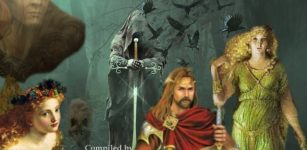 Elusive Celtic Otherworld Where Tuatha Dé Danann Reside And Time Passes Slower
Celtic Mythology | Apr 7, 2018
Elusive Celtic Otherworld Where Tuatha Dé Danann Reside And Time Passes Slower
Celtic Mythology | Apr 7, 2018 -
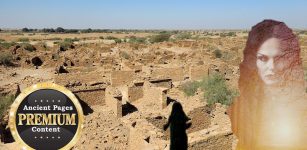 Ancient Mystery Of The Village Where All Residents Vanished Overnight
Featured Stories | Oct 19, 2021
Ancient Mystery Of The Village Where All Residents Vanished Overnight
Featured Stories | Oct 19, 2021 -
 Connection Between Alpha Draconis And Egyptians Pyramids Revealed
Archaeology | Jan 12, 2020
Connection Between Alpha Draconis And Egyptians Pyramids Revealed
Archaeology | Jan 12, 2020 -
 12,000-Year-Old Archaeological Evidence Of Human-Dog Friendship In Alaska
Archaeology | Dec 5, 2024
12,000-Year-Old Archaeological Evidence Of Human-Dog Friendship In Alaska
Archaeology | Dec 5, 2024 -
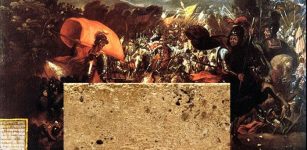 Aztec Treasure: ‘Yew Of Gold’ Found 39 Years Ago Originates From Spanish Plunder During ‘Sad Night’ In 1520
Archaeology | Jan 12, 2020
Aztec Treasure: ‘Yew Of Gold’ Found 39 Years Ago Originates From Spanish Plunder During ‘Sad Night’ In 1520
Archaeology | Jan 12, 2020 -
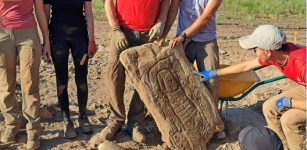 Extraordinary Archaeological Discovery In Spain
Archaeology | Oct 10, 2023
Extraordinary Archaeological Discovery In Spain
Archaeology | Oct 10, 2023 -
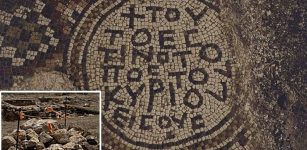 The 6th Century Byzantine Church Hidden Within Khirbet Tinshemet’s Woods – Discovered
Archaeology | Oct 2, 2024
The 6th Century Byzantine Church Hidden Within Khirbet Tinshemet’s Woods – Discovered
Archaeology | Oct 2, 2024 -
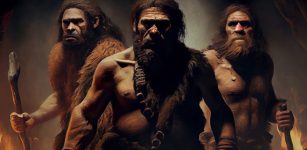 Archaeologist Ludovic Slimak Wants To Rewrite The History Of Early Humans In Europe
Evolution | Jun 10, 2023
Archaeologist Ludovic Slimak Wants To Rewrite The History Of Early Humans In Europe
Evolution | Jun 10, 2023 -
 Kobold: Mythological Spirit Of Underground: Guardian Of Miners And Earth’s Treasures
Featured Stories | Jun 13, 2016
Kobold: Mythological Spirit Of Underground: Guardian Of Miners And Earth’s Treasures
Featured Stories | Jun 13, 2016 -
 Strange Encounter With A Supernatural Being In The 1790s
Featured Stories | Jan 12, 2020
Strange Encounter With A Supernatural Being In The 1790s
Featured Stories | Jan 12, 2020 -
 On This Day In History: Comet Donati First Observed By Italian Astronomer – On June 2, 1858
News | Jun 2, 2016
On This Day In History: Comet Donati First Observed By Italian Astronomer – On June 2, 1858
News | Jun 2, 2016 -
 Pilot Mountain Is Home To A Mysterious Underground Civilization – Cherokee Legend Tells
Featured Stories | Apr 30, 2021
Pilot Mountain Is Home To A Mysterious Underground Civilization – Cherokee Legend Tells
Featured Stories | Apr 30, 2021 -
 New Light On The Complex Evolution Of Our Feet
Evolution | Nov 22, 2023
New Light On The Complex Evolution Of Our Feet
Evolution | Nov 22, 2023 -
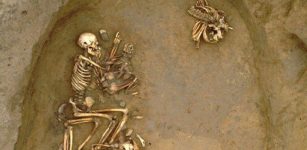 Ancient DNA Has Traced Large-Scale Migrations Into Bronze Age Britain And The Emergence of The Celtic Language
Archaeology | Dec 30, 2021
Ancient DNA Has Traced Large-Scale Migrations Into Bronze Age Britain And The Emergence of The Celtic Language
Archaeology | Dec 30, 2021 -
 Fossil Bones From The Largest Penguin That Ever Lived Unearthed In New Zealand
Fossils | Feb 10, 2023
Fossil Bones From The Largest Penguin That Ever Lived Unearthed In New Zealand
Fossils | Feb 10, 2023 -
 On This Day In History: Macbeth, King of Scots Killed At The Battle Of Lumphanan – On August 15, 1057
News | Aug 15, 2016
On This Day In History: Macbeth, King of Scots Killed At The Battle Of Lumphanan – On August 15, 1057
News | Aug 15, 2016

